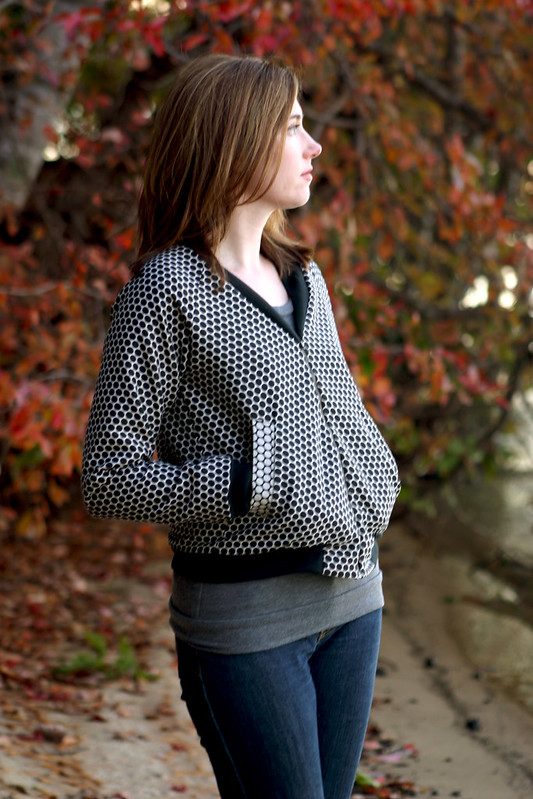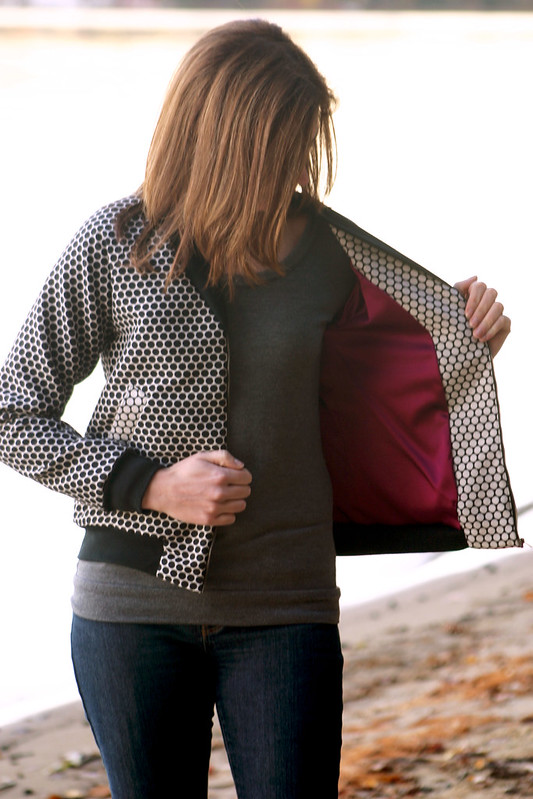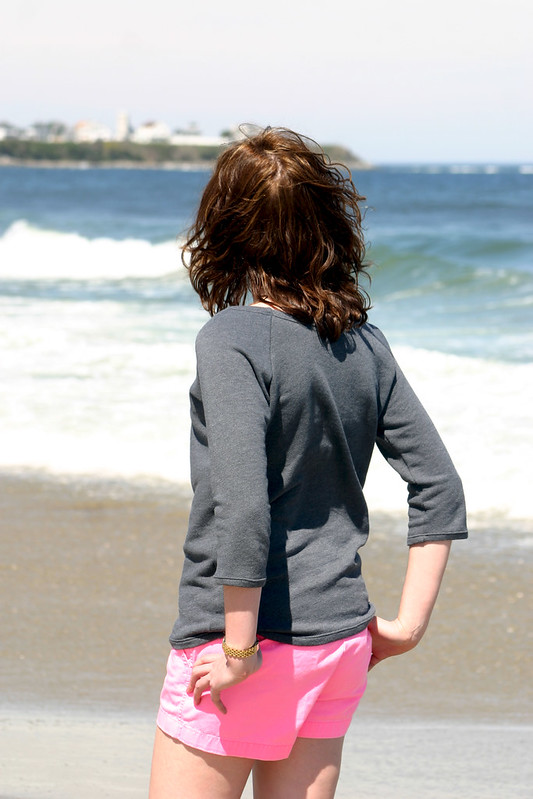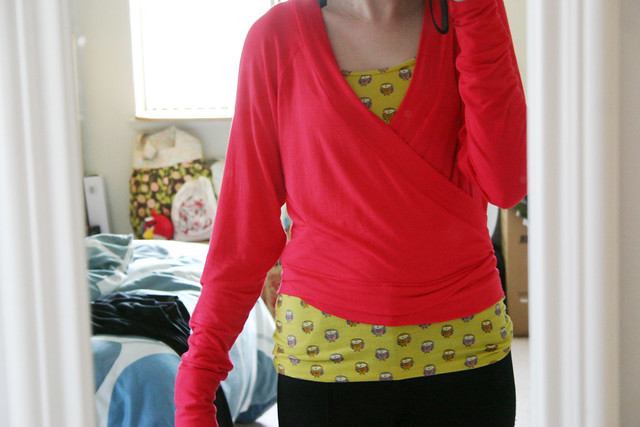

Pattern: Rigel Bomber by Papercut Patterns
Fabric: double sided cotton from Metro Textiles; wool ribbing from Mood Fabrics
Size: XXS
Sweatshirt: Sewaholic Renfrew
Jeans: Michael Kors
Words can’t describe how much I Love. This. Jacket. It’s so versatile – I dressed it up with black pants to wear for an account meeting, and then wore it with jeans and a sweatshirt up in New Hampshire over the holiday weekend. It’s just the right amount of weight for early fall weather, and I know it’ll be perfect when spring arrives next year.
The fabric also makes it – this is a medium weight cotton I bought at Metro Textile this summer, not knowing what I’d make from it. My love for polka dots is unending, and this fabric is a double-sided woven with polka dots…swoon!! How could I not bring this fabric home with me?

True to how Papercut Pattern sizing runs (way too big on me, that is), I cut out a XXS for the top of the jacket and graded to a XS from waist to hips. What I can’t figure out for the life of me is why jacket patterns don’t come with linings by default (ok ok some patterns I can understand…but most, no). I drafted my own, with a pleat in the center back, to attach to the facings because eww, I don’t want to see the pocket bags flapping around and exposed seams of my finished jacket. Plus, linings help jackets stand up to wear much better. It really wasn’t that hard to draft a lining, so I’m not sure as to why this wasn’t an obvious inclusion for the pattern.

See? Pretty raspberry lining with the white polka dot side of the fabric, much better! Also, you’d think I’d learn by now to not use stretch fabrics for linings. This was a beeyatch to hem at the bottom and I had to make some small tucks in the lining fabric to get everything smooth and hemmed nicely.
If you’re planning on making this jacket, definitely take your time to get the zips to match up on either side – it’ll be really obvious at the neckline if the ribbing collar doesn’t match up. I had to redo mine at least twice, but I’m glad I did.
Oh, this was my second time doing welt pockets – they were much easier on this fabric than the thick wool of my Anise!

The ribbing is a tubular wool ribbing I bought a while ago at Mood for a lightweight jacket project that fell through. While sewing this project, I realized it probably wasn’t the best weight to use with the cotton, since the band at the bottom rolls up occasionally (like in the above shot) and the collars are a little floppy and don’t lay as flat as I’d like.
All of that aside, this jacket is going into heavy rotation for the remainder of fall. On to sewing more jackets!






